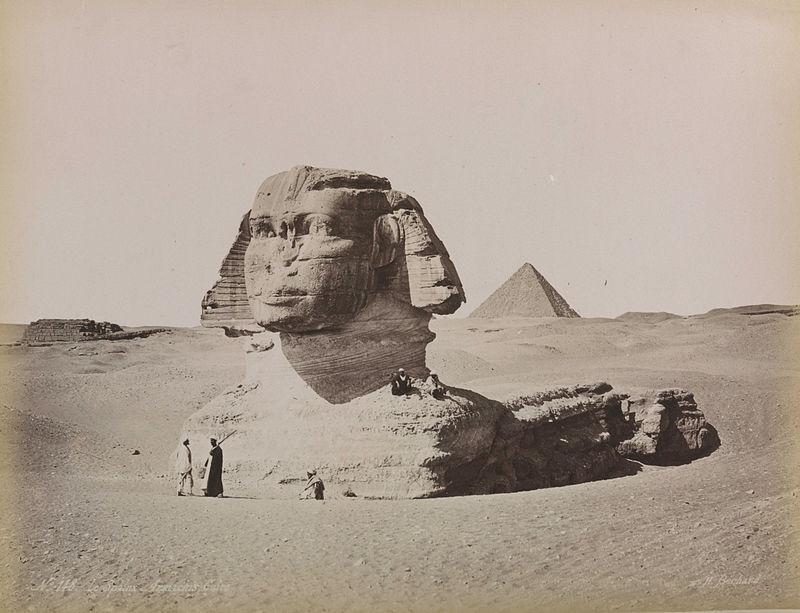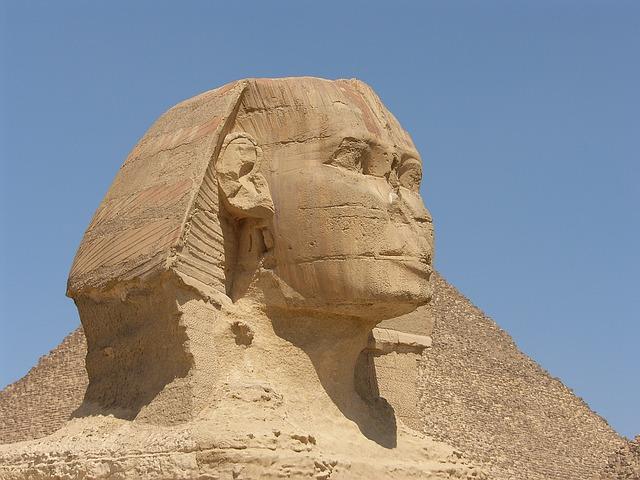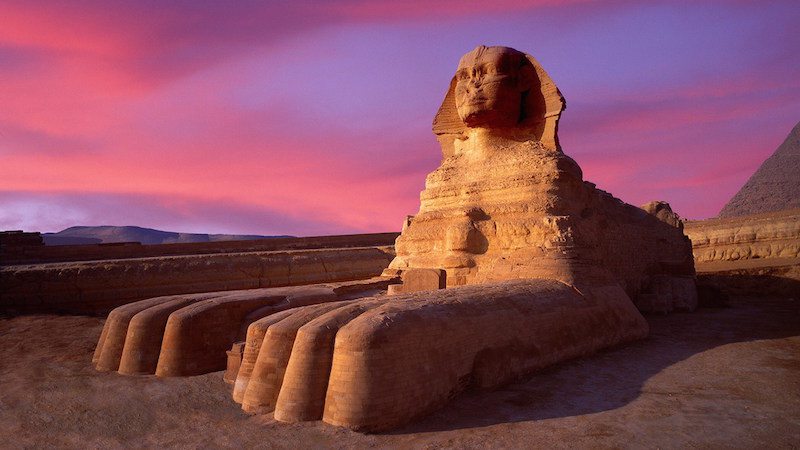The Great Sphinx of Giza
Episode #3 of the course “Mysterious World Landmarks”
On the plateau of Giza in Egypt, an ancient king or “Pharaoh” had himself forever commemorated with a giant monument. Carved from the rocks of the plateau, the great Sphinx has the body of a lion with the head of a man, stands more than 60 feet tall, stretches over 150 feet long, and has come to represent strength and wisdom throughout the centuries. The site of the Sphinx was originally called “Horemakhet” by ancient Egyptians, but the Greeks began calling it the “Sphinx” after a creature in their own mythology.

The Great Sphinx partly under the sand, ca. 1870s
Although historians aren’t precisely sure who is responsible for the design and building of the Sphinx, it is most often attributed to the pharaoh Khafre in the 2500s BCE. Khafre’s pyramid lies at the feet of the Sphinx, and restoration and additions to it by later pharaohs are well-documented. Some scholars, however, believe that the Sphinx more closely resembles Khafre’s older brother, the pharaoh Djedefre, and that Khafre may have overthrown Djedefre and claimed the Sphinx for himself.

At some point throughout history, the Great Sphinx has been damaged. There are records that it once had a beard, which is now missing, along with its nose. Although some stories claim that Napoleon or his troops shot off the Sphinx’s nose, there are drawings of the Sphinx showing this damage from before Napoleon’s visit. The softer layers of the rock that form the Sphinx’s head have suffered damage from wind, sun, sand, and people throughout the years, and the missing nose could be due to a number of causes. So much remains mysterious about the Sphinx that thousands of people every year are attracted to its ancient presence.
Share with friends

